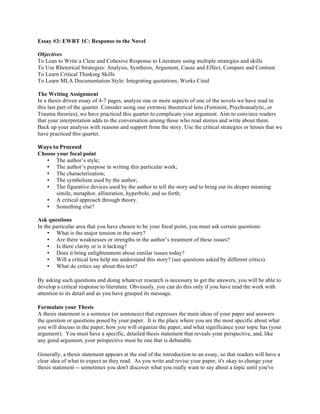This document provides instructions for writing a response essay analyzing a novel read in class. Students are asked to write a 4-7 page thesis-driven essay analyzing one or more aspects of the novel using a critical lens like feminist, psychoanalytic, or trauma theory. The essay should have an introduction with a clear thesis, body paragraphs using evidence from the text to support the thesis, and a conclusion. Guidelines are provided on choosing a topic, asking analytical questions, formulating a thesis, writing each section of the paper, using proper MLA citation style, and expected learning outcomes.


